Introduction
Many new inventions are being used nowadays in the construction industry, including different materials in the construction world, additional equipment, different types of machinery, etc. In this competitive world, it has become utmost necessary to cope with the neighboring countries in terms of infrastructure growth. All these modern techniques help reducing extra expenses, cut labor charges, reducing transportation fees, long life of materials, and many more. Some of these construction innovations are discussed below.
Flat slabbing technology
This method uses the simplicity of modern formwork to quickly construct flat slabs that allow for the quick and easy placement of horizontal partitioning. The use of prefabricated services is maximized since services can be carried out in zones beneath the floor slabs in an unbroken way. Internal layouts may be easily updated for accepting adjustments later, which is why every top-notch building Construction Company uses them. Furthermore, the amount of reinforcement required is reduced, lowering labor expenses significantly.
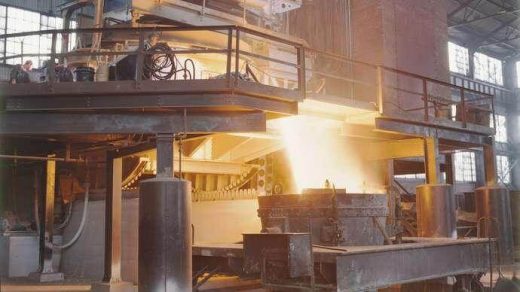
Fig 1: Flat slab construction
Courtesy: Britannica
Flat slabs are suitable for most floor conditions, including uneven column layouts, curving floor shapes, ramps, and so on. Flach slots provide a minimum depth solution, building speed, flexibility in plan layout (shaped and layout-based), a flat soffit (clean finish and layout-free), and space for the use of flying forms. Flat slab construction’s versatility can save money while still giving the architect a lot of creative latitudes.
Tunnel Formwork System
The fabrication of monolithic walls or units in a single operation per day speeds up construction for cellular buildings with recurring patterns using this tunnel technology. The use of formwork and ready-mix concrete, along with the ease and agility of industrial settings, allows for quick work. Cranes are utilized to stack and use tunnel formworks on the job site.
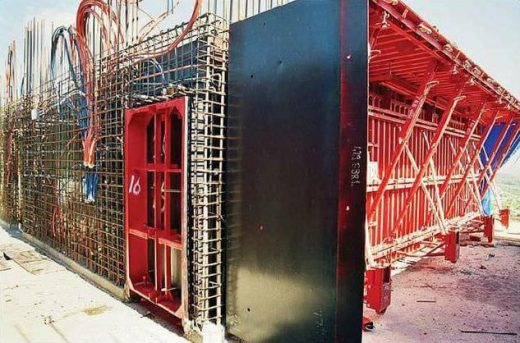
Fig 2: Tunnel Formwork
Courtesy: DirectIndustry
It’s a daily-cycle formwork process that lets the contractor cast both walls and slabs in one go. It combines the speed, quality, and accuracy of in-situ construction with off-site construction’s flexibility and cost savings. When compared to traditional procedures, the construction time is significantly lowered by this speedy system. The Tunnel Form System improves the speed, quality, and precision of concrete construction while also saving money on finishing and M & E. Tunnel forms are sturdy and long-lasting thanks to high-tech steel formwork manufacturing techniques. The method provides efficient load-bearing structures that are noted for being earthquake resistant.
Precast Flat Panel Modules
These are wall, and floor modules made off-site and then brought to the construction site for installation. It’s also possible to make load-bearing components like decorative cladding and insulating panels with this technology. The technology, also known as cross-wall construction, has gained popularity due to its seamless adherence to requirements and ease and speed of construction.
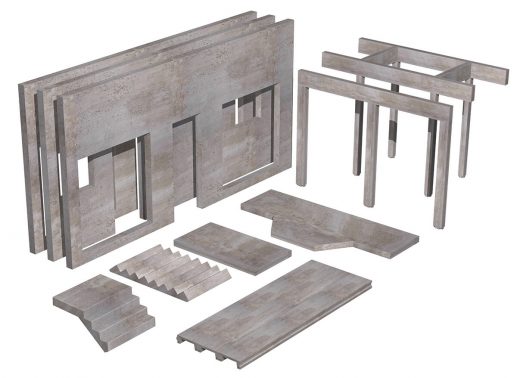
Fig 3: Precast modules
Courtesy: Oldcastle Infrastructure
The PFP system entails the manufacture of various structures at the factory, such as doors, windows, walls, and floor units, which are then brought to the job site and erected. This technology is ideal for repeat projects since it provides quality and effectiveness while also allowing for quick on-site erection.
3D Volumetric Construction
3D modules are manufactured in regulated factory settings employing necessary construction and building materials using this modular construction technique. For assembly, finished units are shipped to the site in various modules, such as basic structural blocks or fully finished units with all amenities installed. The qualities of concrete, such as fire resistance, sound resistance, and thermal mass, are kept when blocks are quickly built on site.
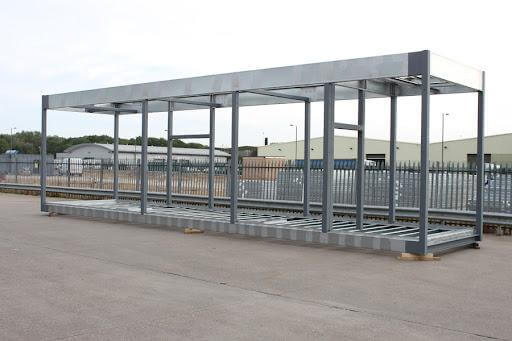
Fig 4: 3D Volumetric Structures Huntingdon
Courtesy: Accio Consult & Construct
This method can be used to construct permanent (and sometimes temporary) structures such as homes, schools, offices, hospitals, and other permanent (and occasionally temporary) facilities. It helps balance the three components of a standard construction project: time quality and cost. In other words, when a structure must be erected swiftly, to a high-quality standard, and at a low cost, volumetric architecture comes into its own.
Thin-Joint Masonry Technique
By reducing the depth of the mortar from 10mm to less than 3mm, this technique reduces the amount of mortar poured. As a result, mortar may be poured quickly and efficiently on the more extended wall panels, increasing production. Higher building efficiency and significant cost savings can be realized with large-sized concrete blocks. The number of mortar courses put in a single day is more prominent because the mortar cures quickly without reducing bonding strength, resulting in removing the floating problem.
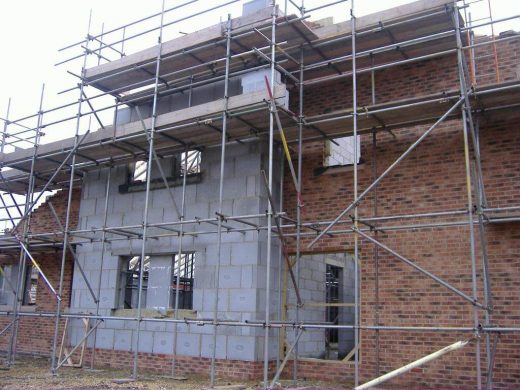
Fig 5: Thin joint mortar construction
Courtesy: DocPlayer.net
This building technique is gaining popularity in the UK. It has already accounted for up to 90% of masonry construction in many European countries. Moreover, as building standards evolve and building technical and environmental requirements rise, the advantages of this quick, simple, and highly effective construction style will become increasingly apparent. Thin-Joint construction provides a solution for builders who want to maximize a building’s thermal performance, reduce CO2 emissions over its lifetime while maintaining the familiarity, comfort, stability, and long-term solidity of a masonry structure.
Hybrid Concrete Construction
This is a hybrid of precasting and in-situ casting, resulting in double the quality, half the construction time, and overall cost savings. It is a favorite among those seeking admirable quality at an affordable price. The structure is long-lasting and consistently performs well. The cost of construction falls while the quality rises. Hybrid concrete structures are simple to construct, competitive in nature, and consistently perform.
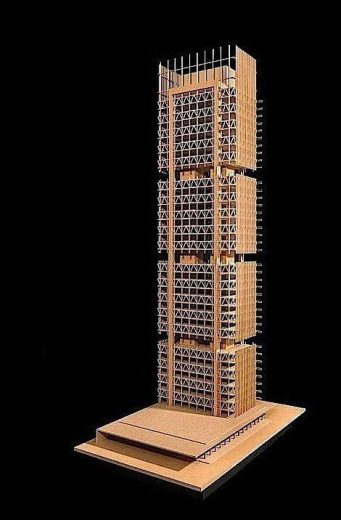
Fig 5: Wood Proponents Pushing Higher With Hybrid Construction
Courtesy: EDI Weekly
Although the structural frame of a building accounts for only 10% of the total construction cost, the material used in the frame has a significant impact on subsequent processes. The precast factory handles a large portion of the work for a hybrid concrete construction project. The use of hybrid concrete construction on-site means that each safety plan is tailored to the project’s unique requirements. By providing successive work platforms on a less cluttered site, hybrid concrete construction can reduce the risk of accidents.
Insulating Concrete Framework
As the name implies, this technology uses expanded polystyrene panels to provide insulation to a building’s wall, filled with concrete to create an unbreakable structure. The polystyrene ensures that heat is trapped inside, while the concrete offers acute wall strength.
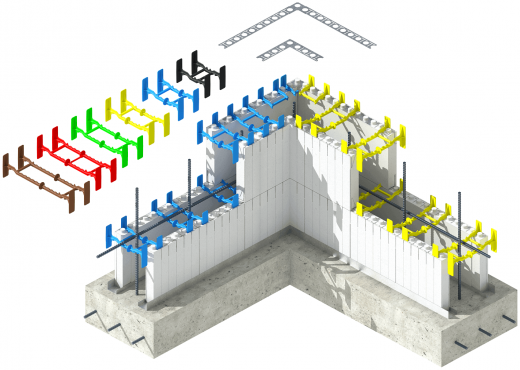
Fig 6:Insulating concrete forms
Courtesy: Quad-lock ICF
After WWII, Swiss engineers began holding cement walls and treated wood blocks, which led to the development of the ICF. Following that, chemical companies developed plastic foams based on the concept. Jean-Louis Béliveau later improved on this to control the temperature in his parents’ Florida home. These forms serve as permanent wall supports, providing wiring and plumbing, thermal and acoustic insulation, and serving as the interior side for exterior walls.
Precast Foundations
This system is utilized to construct a structure’s foundations, with concrete piles serving primarily as a source of strength before joining to give the foundation its shape. All of this takes place within a factory’s controlled environment under constant monitoring.
According to Monachino Technology, by using the company’s foundation system, the cost of creating a foundation can be cut in half compared to a traditional foundation. Another benefit is that worker safety on the construction site will be enhanced.
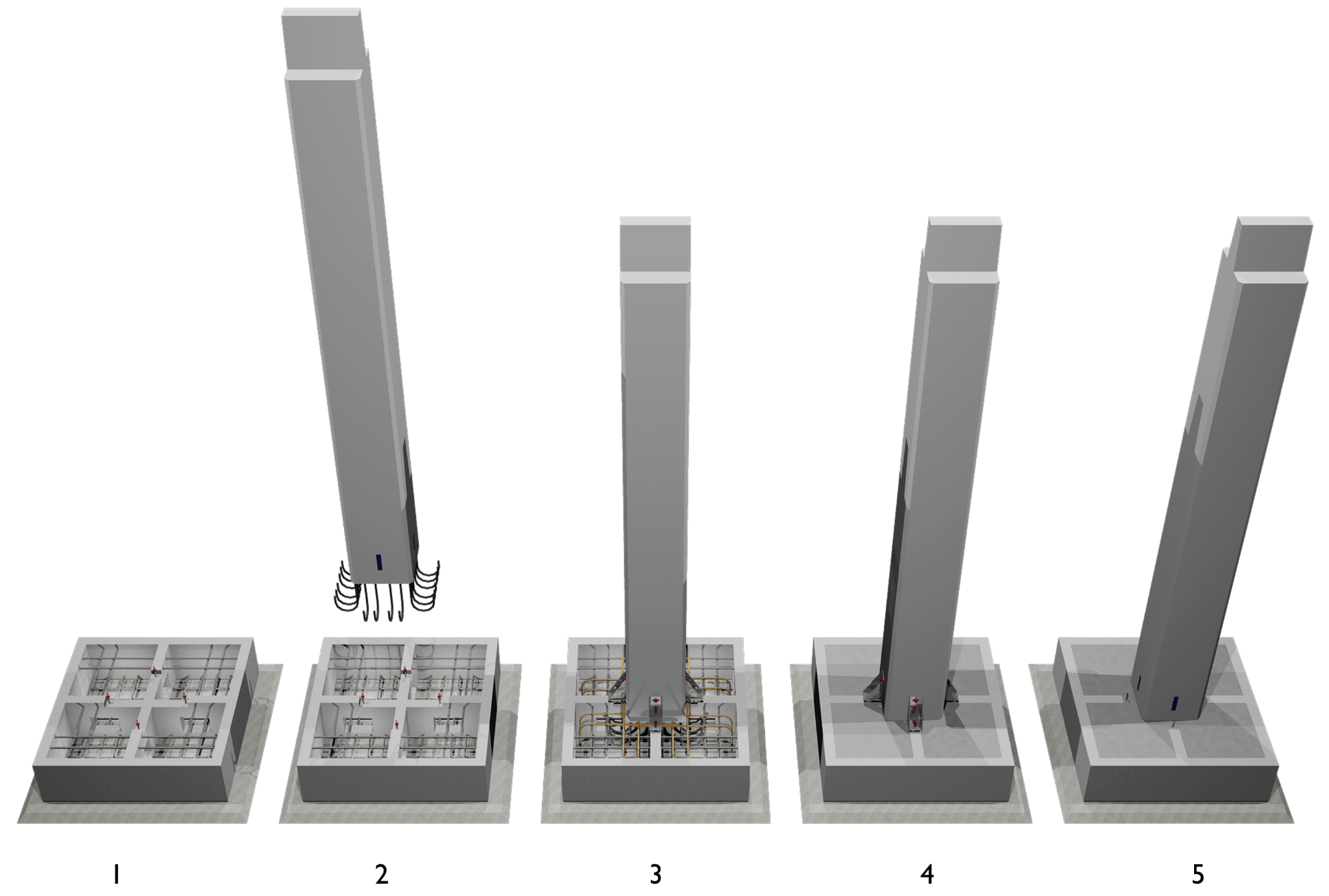
Fig 7: Precast foundation laying
Courtesy: Monachino Technology
The connecting perimeter beams of the structure act as panel beams for the precast panel and are dimensioned appropriately. Little precast pads may be used to support the connecting shaft at the center to optimize the dimensioning of the connecting beams. The connecting beam can be either precast or cast in place.
Conclusion
All these are useful in speeding up construction activities and making them economical. Since the pandemic, it has become crucial to save money and use it wisely for other investments. There are different techniques too that can be employed in construction activities. Initially, these techniques may cost a lot of money as they are sophisticated, but as time will go, it will prove to be economical since maintenance and other extra charges will be reduced. Therefore, it is the sole responsibility of the civil engineer to make use of time and money in the most efficient manner.
References
BFT International, “Precast Pad Foundation”- https://www.bft-international.com/en/artikel/bft_Precast_Pad_Foundation_2889743.html
Sancheti Builders, “8 MODERN BUILDING CONSTRUCTION TECHNIQUES”- http://sanchetibuilders.com/8-modern-building-construction-techniques/
Thomas Armstrong Concrete Blocks, “Thin Joint Construction”- https://www.thomasarmstrongconcreteblocks.co.uk/thin-joint-construction.html
New Engineer, “3D Volumetric Construction”- https://newengineer.com/blog/3d-volumetric-construction-1513810
T.G & Sons, “Precast Flat Panel System”- https://tgsons.com/tag/precast-flat-panel-system/
Mpa The Concrete Centre, “Hybrid concrete construction”- https://www.concretecentre.com/Building-Solutions/Framed-buildings/Hybrid-Concrete-Construction.aspx
Rohan Builders, “TUNNEL FORM CONSTRUCTION TECHNIQUE AT ROHAN ABHILASHA, PUNE”- https://www.rohanbuilders.com/blog/tunnel-form-construction-technique-at-rohan-abhilasha-pune.html
The Concrete Society, “Flat slabs”- http://www.concrete.org.uk/fingertips-nuggets.asp?cmd=display & id=84
ESub, “The Pros and Cons of Using Insulated Concrete Forms”- https://esub.com/blog/the-pros-and-cons-of-using-insulated-concrete-forms/
If you have a query, you can ask a question here.



Very informative . I would like to get more information via email